COURSE CATALOG
Filter Course Categories
Search Courses
Course Length
Bloodborne Pathogens Pt1: What is a Bloodborne Pathogen?


Category
All Industries
Who
Standards
Seat Time
Course Description
Part 1 of BBP introduces Bloodborne Pathogens (BBPs) as microorganisms in blood and bodily fluids that can transmit diseases. It covers types of BBPs, including viruses like HIV and hepatitis, and emphasizes where they are commonly and uncommonly found.
The course details how BBPs transmit, either directly or indirectly, and highlights the BBP Exposure Control Plan’s role in minimizing workplace risks.
This module provides foundational BBP knowledge for workplace settings.
Course Preview
Bloodborne Pathogens Pt2: Prevent the Spread!


Category
All Industries
Who
Standards
Seat Time
Course Description
Part 2 of BBP stresses treating all body fluids as potential infection sources. It introduces various Personal Protective Equipment (PPE) like gloves, gowns, and masks. Proper donning and doffing of PPE are taught to prevent contamination, with special attention on gloves’ correct use and safe disposal.
Building on Part 1, this module dives into BBP prevention practicalities, urging vigilance and best practices in the workplace to reduce BBP exposure risks.
Course Preview
Bloodborne Pathogens Pt3: Exposure Response.


Category
All Industries
Who
Standards
Seat Time
Course Description
Part 3 of BBP clarifies the definition of exposure to infectious materials and the importance of recognizing risk. Upon exposure, immediate actions like cleaning, disinfection, and reporting are vital.
The course provides insights into the Hepatitis B vaccine and its benefits. It outlines the correct BBP exposure reporting methods and emphasizes employees’ rights to medical treatment post-exposure.
This module centers on managing BBP exposure and understanding preventive actions and rights.
Course Preview
Bloodborne Pathogens: Universal Precautions


Category
All Industries
Who
Standards
Seat Time
Course Description
BBP Universal Precautions training for Bloodborne Pathogens emphasizes workplace safety and proactive accident prevention. It teaches best practices for handling BBP exposures, including immediate risk-reduction actions. Employees learn about various BBPs, such as HIV and hepatitis.
The training underscores avoiding contact with others’ bodily fluids unless job-related. Its goal is fostering a safety culture and equipping employees with tools to prevent BBP exposures at work.
Course Preview
Caught-In & Between: Awareness


Category
All Industries
Who
Standards
Seat Time
Course Description
Caught-In & Caught-Between Awareness training defines common jobsite hazards, like the dangers from unguarded machinery and the risks of being buried by materials or pinned between objects. It emphasizes machinery safety, understanding of potential trenching hazards, and the importance of awareness around heavy machinery.
The course promotes mindfulness, urging workers to identify and mitigate hazards proactively.
An interactive simulation offers virtual experience, emphasizing hazard awareness and safety.
The training aims to equip workers with knowledge to avoid job-related accidents.
Course Preview
Confined Space PRCS General Awareness



Category
All Industries
Who
Standards
Seat Time
Course Description
Confined Space and PRCS training introduces key terms, differentiating between confined spaces and PRCS. It details roles like entrants, attendants, and supervisors, stressing the importance of clear responsibilities.
The course covers safe work practices, including pre-entry checks and permit compliance. It highlights recognizing and mitigating hazardous atmospheres, understanding space configurations, and responding to detected hazards.
An interactive simulation lets learners practice safe entry protocols.
The training aims to ensure workers are knowledgeable and vigilant in confined spaces, prioritizing safety and hazard prevention.
Course Preview
Confined Space PRCS The Permit


Category
All Industries
Who
Standards
Seat Time
Course Description
PRCS – The Permit training outlines the essential requirements for safely entering confined spaces. It details the 15 sections of the entry permit, from space identification to rescue plans.
The course emphasizes proper signage, indicating entry status, and highlights specific roles like entrants and supervisors. It defines acceptable entry conditions, based on atmospheric tests and equipment checks, and explains when and how to cancel a permit.
The training ensures personnel understand and adhere to critical safety protocols in confined spaces
Course Preview
Confined Space PRCS Types & Rescue Requirements


Category
All Industries
Who
Standards
Seat Time
Course Description
PRCS Types and Rescue Requirements training details roles and duties for confined space work, emphasizing communication and safety. It differentiates between non-permit and permit-required confined spaces and their entry protocols.
The course underscores the selection of suitable PPE and retrieval tools for specific hazards, and presents options for entry rescue services, stressing the importance of a timely rescue plan.
An interactive simulation lets learners act as attendants, overseeing entry procedures and potential rescues, ensuring thorough preparedness for confined space tasks.
Course Preview
Earth Moving Equipment


Category
All Industries
Who
Standards
Seat Time
Course Description
The Earthmoving Equipment Safety course introduces learners to various construction machinery like bulldozers and excavators. It addresses potential hazards, such as blind spots and utility line contact. Emphasis is on safety features like seat belts and rollover protections.
The course highlights the need for regular maintenance, proper equipment usage, and the importance of operator training. It also guides on routine inspections and managing runaway equipment.
An interactive simulation lets learners identify jobsite hazards, reinforcing safety awareness and protocols.
Course Preview
Electrical Equipment Inspection


Category
All Industries
Who
Standards
Seat Time
Course Description
Electrical Equipment Inspection training offers a primer on visually inspecting portable electrical tools. It covers spotting hazards like damaged cords or plugs and emphasizes regular checks.
The course details inspecting double-insulated tools, which provide enhanced safety, and differentiates between two-prong and three-prong plug inspections, noting the significance of proper grounding. Extension cord evaluations, often a hazard source, are highlighted.
Overall, the training focuses on ensuring safe use of electrical equipment by identifying potential issues.
Course Preview
Electrical GFCI & AEGCP Awareness
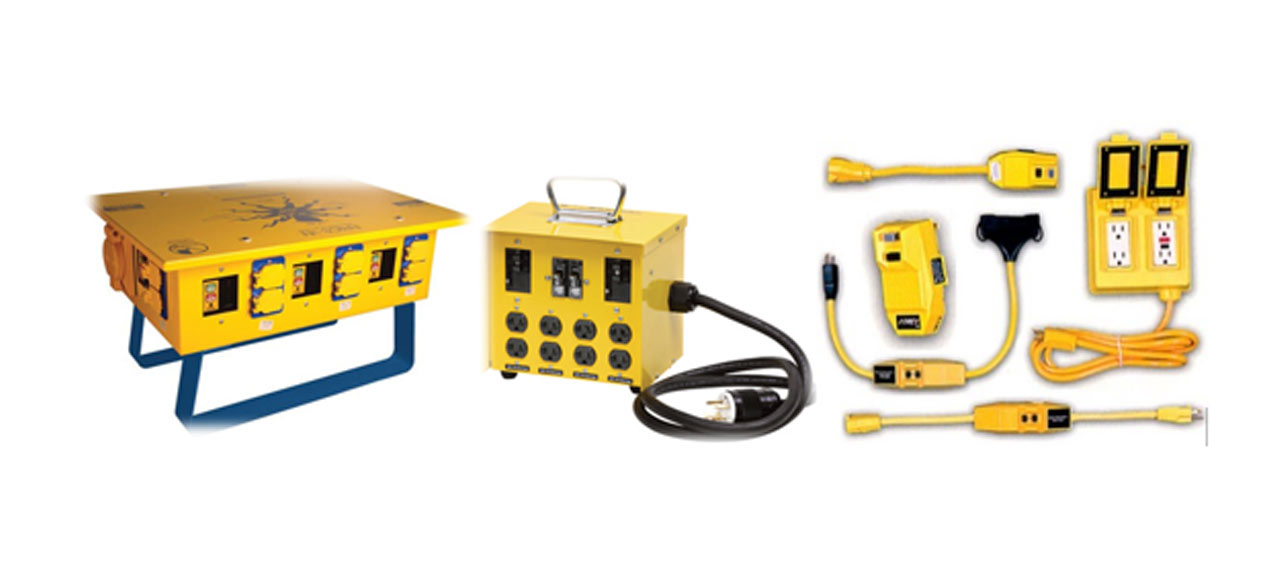

Category
All Industries
Who
Standards
Seat Time
Course Description
Electrical Safety with GFCI and AEGCP training introduces the significance of electrical safety at work, emphasizing trained personnel should only handle electricity. It educates on Ground Fault Circuit Interrupters (GFCI), devices that detect ground faults and disconnect power to avoid shocks.
The course also covers the Assured Equipment Grounding Connector Program (AEGCP), focusing on equipment grounding for safety.
An interactive simulation lets learners identify electrical hazards in a virtual construction setting, highlighting the importance of electrical safety awareness.
Course Preview
Electrical Hazards – Part 1: Burns, Electrocution, and Shock


Category
All Industries
Who
Standards
Seat Time
Course Description
Electrical Hazards – Part 2: Arc Flash/Blast, Fire, and Explosion builds on Part 1, introducing advanced hazards using the “BE SAFE” acronym: Arc Flash/Arc Blast, Fire, and Explosion.
The course educates on arc flash and arc blast dangers, explaining causes and safety measures, including protective equipment. It addresses electrical fire causes and prevention, and strategies to mitigate explosion risks.
An interactive segment has learners identify hazards in a virtual workplace, enhancing awareness and safety practices. The training deepens understanding of these advanced electrical hazards, emphasizing prevention and response.
Course Preview
Electrical Hazards – Part 2: Arc Flash/Blast, Fire, and Explosion


Category
All Industries
Who
Standards
Seat Time
Course Description
Electrical Hazards – Part 2: Arc Flash/Blast, Fire, and Explosion builds on Part 1, introducing advanced hazards using the “BE SAFE” acronym: Arc Flash/Arc Blast, Fire, and Explosion.
The course educates on arc flash and arc blast dangers, explaining causes and safety measures, including protective equipment. It addresses electrical fire causes and prevention, and strategies to mitigate explosion risks.
An interactive segment has learners identify hazards in a virtual workplace, enhancing awareness and safety practices. The training deepens understanding of these advanced electrical hazards, emphasizing prevention and response.
Course Preview
Electrocution Awareness
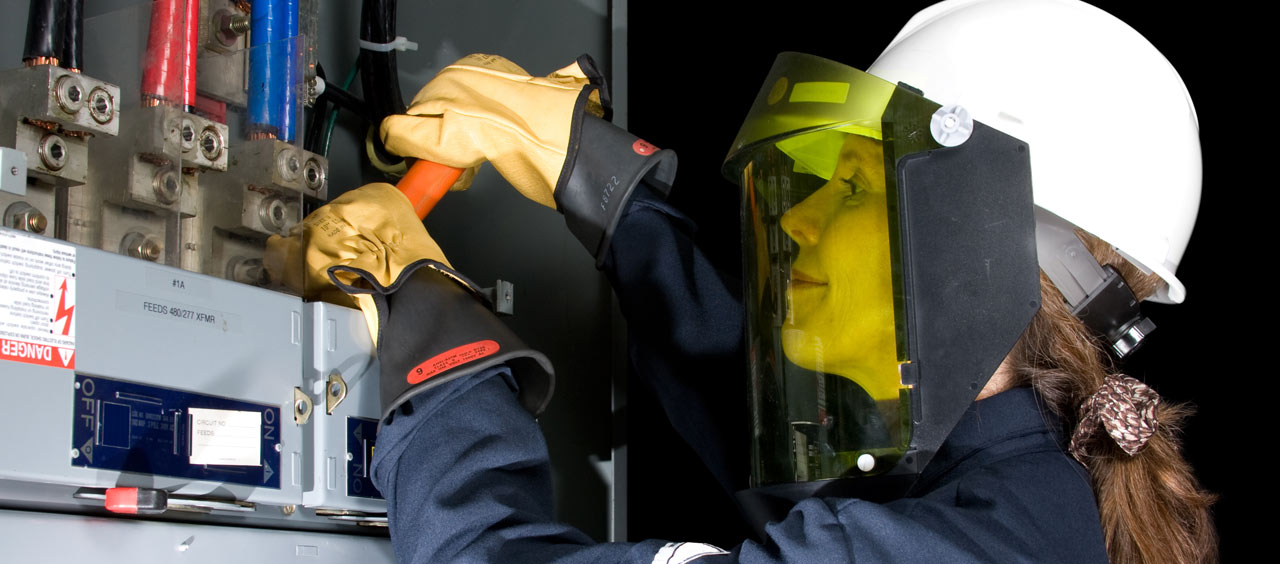

Category
All Industries
Who
Standards
Seat Time
Course Description
Electrocution Awareness is a foundational course for construction workers, highlighting electrical dangers on jobsites. It instructs on spotting electrocution risks like overhead powerlines and damaged equipment.
The training clarifies the distinction between electrical shock and electrocution, explaining varying injury degrees. It stresses safety controls, such as avoiding live components and proper lockout/tagout methods. A key focus is overhead powerline safety and maintaining safe distances.
An interactive simulation lets learners identify hazards on a virtual jobsite, fostering hazard awareness and safe practices. The course aims to enhance safety measures against electrical risks in construction.
Course Preview
Emergency Action Plan


Category
All Industries
Who
Standards
Seat Time
Course Description
Emergency Action Plan training introduces learners to common workplace emergencies, highlighting the need for preparedness.
The course details the components and significance of a documented Emergency Action Plan (EAP).
An interactive simulation lets learners navigate a virtual construction site, confronting typical emergencies and applying the EAP’s protocols.
This training aims to arm employees with the expertise to tackle workplace emergencies, emphasizing the critical role of a robust EAP in ensuring employee safety during emergencies.
Course Preview
Emergency Action Planning & Medical Services


Category
All Industries
Who
Standards
Seat Time
Course Description
Emergency Action Planning & Medical Services training introduces various jobsite emergencies, emphasizing preparedness. It delves into the components of a documented Emergency Action Plan (EAP), illustrating its vital role in employee safety during emergencies.
The course specifically addresses medical emergencies, teaching learners to handle various medical situations, including first aid, injury assessment, and initial care.
An interactive simulation immerses learners in a virtual jobsite, confronting them with typical emergencies, testing their EAP knowledge. This training aims to equip employees with the expertise to tackle workplace emergencies, especially medical ones, highlighting the significance of a thorough EAP.
Course Preview
Emergency Planning: Exits and Egress



Category
All Industries
Who
Standards
Seat Time
Course Description
Emergency Planning: Exits & Egress teaches workers the importance of maintaining clear emergency exits.
The course covers essential components of exit routes, including access, the exit, and discharge areas. It highlights the significance of exit signage and ensuring pathways are free from obstructions.
An interactive simulation places learners in a virtual emergency, emphasizing the practical application of knowledge. This training ensures workers can effectively navigate and understand emergency exits, prioritizing safety during crises.
Course Preview
Fall Protection Systems Awareness


Category
All Industries
Who
Standards
Seat Time
Course Description
The Fall Protection Systems Awareness training educates construction workers about essential fall protection systems like guardrails and safety nets. It emphasizes recognizing hazards, especially from falling objects, and selecting appropriate personal protection equipment.
An interactive simulation offers hands-on experience in a virtual high-rise setting, promoting effective hazard identification. The course underscores the significance of correct equipment choice and maintaining safety in high-risk zones.
Course Preview
Fall Protection Systems Awareness



Category
General Industry
Who
Standards
Seat Time
Course Description
Fall Protection Systems Awareness educates workers on fall protection in high-risk environments.
The training delves into different protection systems like guardrails and safety nets, and the importance of shielding workers from falling objects. It introduces personal equipment like body belts and teaches how to select the right protection based on the task.
An interactive simulation in a virtual construction setting reinforces hazard identification and protection application, ensuring workers are well-equipped for safety.
Course Preview
Fire Extinguisher Inspection
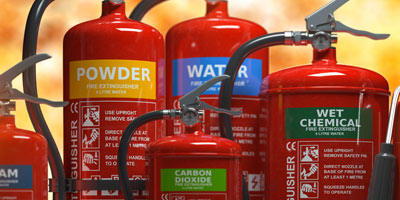

Category
All Industries
Who
Standards
Seat Time
Course Description
The Fire Extinguisher Inspection training teaches employees essential inspection procedures for workplace fire extinguishers. It covers the examination of key components like the pressure gauge, safety pin, hose, and nozzle.
An interactive simulation offers hands-on experience, guiding learners through a detailed extinguisher inspection. This course ensures workers maintain fire extinguishers’ effectiveness, promoting workplace fire safety.
Course Preview
Fire Extinguisher Inspection
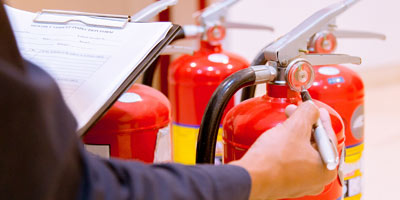

Category
All Industries
Who
Standards
Seat Time
Course Description
The Fire Extinguisher Inspection training teaches employees essential inspection procedures for workplace fire extinguishers. It covers the examination of key components like the pressure gauge, safety pin, hose, and nozzle.
An interactive simulation offers hands-on experience, guiding learners through a detailed extinguisher inspection. This course ensures workers maintain fire extinguishers’ effectiveness, promoting workplace fire safety.
Course Preview
Fire Extinguisher Use



Category
Construction
Who
Standards
Seat Time
Course Description
The Fire Extinguisher Use training educates learners on appropriate fire extinguisher use during emergencies. It highlights when to use an extinguisher, evacuate, or call for help based on fire severity.
The course covers the P.A.S.S. method (Pull, Aim, Squeeze, Sweep) and emphasizes the importance of emergency evacuation.
An interactive simulation presents various fire scenarios, challenging learners to decide on the best response. This training enhances workplace readiness for fire incidents.
Course Preview
Fire Extinguisher Use



Category
All Industries
Who
Standards
Seat Time
Course Description
The Fire Extinguisher Use training educates learners on appropriate fire extinguisher use during emergencies. It highlights when to use an extinguisher, evacuate, or call for help based on fire severity.
The course covers the P.A.S.S. method (Pull, Aim, Squeeze, Sweep) and emphasizes the importance of emergency evacuation.
An interactive simulation presents various fire scenarios, challenging learners to decide on the best response. This training enhances workplace readiness for fire incidents.
Course Preview
Fire Prevention Awareness


Category
All Industries
Who
Standards
Seat Time
Course Description
The Fire Prevention Awareness course emphasizes workplace fire prevention strategies. Trainees learn the essentials of a fire prevention plan, identify flammable and combustible chemicals, and recognize potential ignition sources like electrical equipment and open flames.
An interactive simulation lets learners interact with pictograms, inspect chemical drum labels, and spot ignition sources in a virtual setting, enhancing their real-world hazard recognition and prevention skills.
This training prioritizes a safe, fire-free workplace.
Course Preview
Fire Prevention Awareness


Category
All Industries
Who
Standards
Seat Time
Course Description
The Fire Prevention Awareness course emphasizes workplace fire prevention strategies. Trainees learn the essentials of a fire prevention plan, identify flammable and combustible chemicals, and recognize potential ignition sources like electrical equipment and open flames.
An interactive simulation lets learners interact with pictograms, inspect chemical drum labels, and spot ignition sources in a virtual setting, enhancing their real-world hazard recognition and prevention skills.
This training prioritizes a safe, fire-free workplace.
Course Preview
Fire Protection Awareness


Category
All Industries
Who
Standards
Seat Time
Course Description
The Fire Protection course emphasizes workplace fire safety. Participants learn about the fire triangle (fuel, heat, oxygen), different fire extinguisher types for various fire classes, and their proper uses. Importance is placed on regular extinguisher inspections and the P.A.S.S. method (Pull, Aim, Squeeze, Sweep) for effective use.
An interactive simulation lets learners decide between using an extinguisher or evacuating, and practice extinguishing virtual fires. This training aims to boost fire safety awareness and practical response skills in the workplace.
Course Preview
Fire Protection Awareness


Category
All Industries
Who
Standards
Seat Time
Course Description
The Fire Protection course emphasizes workplace fire safety. Participants learn about the fire triangle (fuel, heat, oxygen), different fire extinguisher types for various fire classes, and their proper uses. Importance is placed on regular extinguisher inspections and the P.A.S.S. method (Pull, Aim, Squeeze, Sweep) for effective use.
An interactive simulation lets learners decide between using an extinguisher or evacuating, and practice extinguishing virtual fires. This training aims to boost fire safety awareness and practical response skills in the workplace.
Course Preview
Forklift General Safety


Category
All Industries
Who
Standards
Seat Time
Course Description
The Forklift Safety Awareness course educates employees on safe forklift operations, highlighting potential hazards like tipping and overloading. It emphasizes best practices for maneuvering and handling loads, ensuring both operator and pedestrian safety.
Trainees learn about safe parking procedures, the distinction between attended and unattended operations, and the importance of backup alarms. Interactive components, such as quizzes and simulations, enhance understanding and application.
This training promotes a safer workplace environment by enhancing forklift safety awareness and practices.
Course Preview
Forklift Operator Awareness: Part 1


Category
All Industries
Who
Standards
Seat Time
Course Description
Forklift Operator Awareness: Part 1 provides foundational knowledge on forklifts, covering their types like counterbalance forklifts and pallet jacks. Trainees learn about hazards such as tip-overs and control mechanisms, including steering and braking.
The course emphasizes driver awareness, spotlighting the importance of clear sightlines and recognizing blind spots. Safe driving practices, like speed control and maneuvering in tight spaces, are discussed. Unique forklift features, such as rear-wheel steering, are highlighted.
Course Preview
Forklift Operator Awareness: Part 2


Category
All Industries
Who
Standards
Seat Time
Course Description
Forklift Operator Awareness: Part 2 delves into advanced forklift operation topics. Trainees explore the forklift’s shifting center of gravity and its role in stability. Safe practices for navigating inclines, understanding load positioning, and speed control are emphasized. Proper stopping, parking, and the use of parking brakes are detailed.
The course highlights the dangers of tip-overs, their causes, and self-protection techniques. Distinctions between safely stepping away from a secured forklift and leaving an unattended, running forklift are clarified.
This module equips participants with in-depth knowledge to operate forklifts safely and efficiently.
Course Preview
Forklift Pre-Operation: Key Off Inspection


Category
All Industries
Who
Standards
Seat Time
Course Description
Forklift Pre-Operation: Key Off Inspection teaches forklift operators about essential pre-operation checks. Trainees learn general inspections applicable to all forklift types, covering components like tires and lights. They also delve into specific checks for electric, internal combustion, and propane forklifts, such as batteries and fuel systems.
The course underscores the importance of daily inspections to prevent accidents and details steps if a forklift fails inspection, including reporting and awaiting repairs.
An interactive simulation reinforces the inspection process. By course end, operators will understand how to ensure forklift safety before use, promoting a safer workplace.
Course Preview
Forklift Pre-Operation: Key On Inspection


Category
All Industries
Who
Standards
Seat Time
Course Description
Forklift Pre-Operation: Key On Inspection emphasizes the importance of inspecting forklifts once they are powered on. Trainees understand the necessity and frequency of these checks, ensuring forklift safety. If issues arise during the inspection, participants learn to report them, mark the equipment as “out of service,” and avoid operation until repairs are made.
The course delves into various inspection items, including label legibility, light functionality, dashboard checks, safety device assessment, fork condition, and mast movement evaluation.
An interactive simulation offers hands-on experience, guiding learners through the inspection process. By the course’s end, operators will be adept at key on inspections, fostering a safer workplace.
Course Preview
Hazard Communication
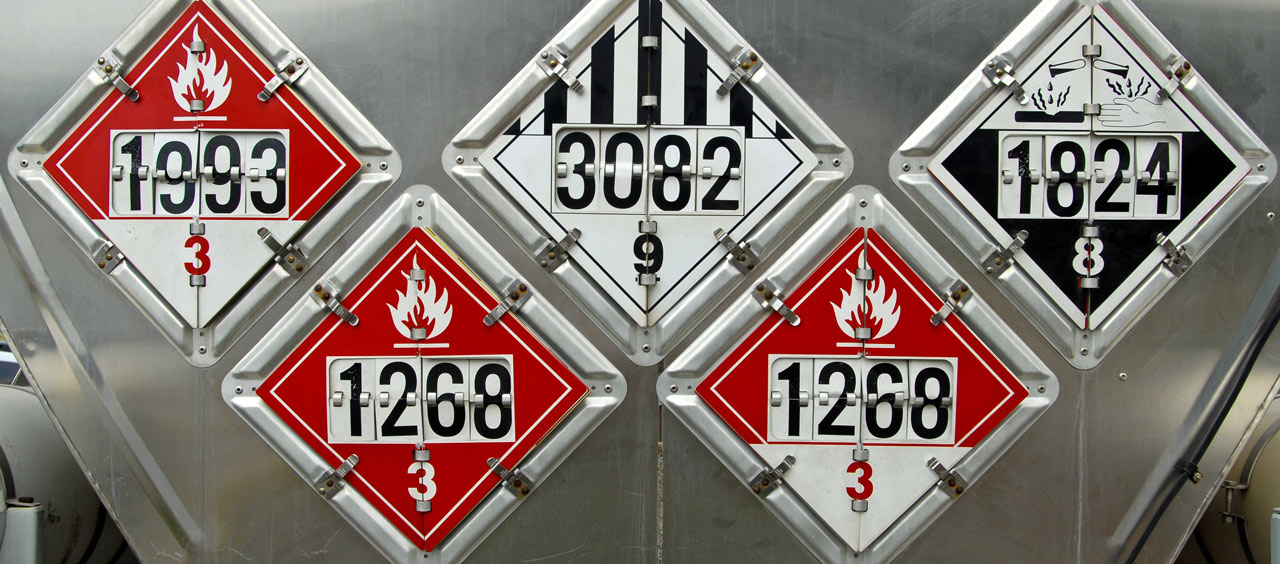


Category
All Industries
Who
Standards
Seat Time
Course Description
The Hazard Communication course offers a deep dive into global safety standards for hazardous chemical handling. It begins with an introduction to the importance of hazard communication, followed by an exploration of the 16-section Safety Data Sheets (SDS) and how to interpret them.
The course covers the nine GHS pictograms, the significance of signal words, and precautionary statements. It also discusses container labeling requirements and other labeling guidelines.
An interactive simulation lets participants engage with chemical labels, interpret SDS sections, and respond to a chemical spill scenario. By the end, learners will be adept at understanding and applying hazard communication principles, ensuring safer chemical handling in the workplace.
Course Preview
Ladder Inspection



Category
All Industries
Who
Standards
Seat Time
Course Description
Ladder Inspection Training educates learners about ladder safety on job sites.
The course introduces different ladder types, such as step and extension ladders, and their appropriate uses. It emphasizes pre-use inspections, guiding learners through detailed procedures to identify hazards like damaged rungs and stability issues.
An interactive simulation lets learners practice inspecting a virtual A-Frame ladder, reinforcing safety principles. By course end, learners will confidently inspect and safely use ladders, minimizing workplace accidents.
Course Preview
Ladder Inspection



Category
All Industries
Who
Standards
Seat Time
Course Description
The course introduces different ladder types, such as step and extension ladders, and their appropriate uses. It emphasizes pre-use inspections, guiding learners through detailed procedures to identify hazards like damaged rungs and stability issues.
An interactive simulation lets learners practice inspecting a virtual A-Frame ladder, reinforcing safety principles. By course end, learners will confidently inspect and safely use ladders, minimizing workplace accidents.
Course Preview
Ladder Use



Category
All Industries
Who
Standards
Seat Time
Course Description
The Ladder Use course teaches safe ladder practices in workplaces. It highlights choosing the right ladder, correct setup for A-Frame and extension ladders, and key safety measures.
An interactive simulation underscores the importance of ladder safety, appropriate selection based on job needs, proper placement, and avoiding hazards like electricity. Learners will grasp how to climb and position ladders securely and safely.
Course Preview
Ladder Use



Category
All Industries
Who
Standards
Seat Time
Course Description
The Ladder Use course teaches safe ladder practices in workplaces. It highlights choosing the right ladder, correct setup for A-Frame and extension ladders, and key safety measures.
An interactive simulation underscores the importance of ladder safety, appropriate selection based on job needs, proper placement, and avoiding hazards like electricity. Learners will grasp how to climb and position ladders securely and safely.
Course Preview
Lockout/Tagout (LOTO)
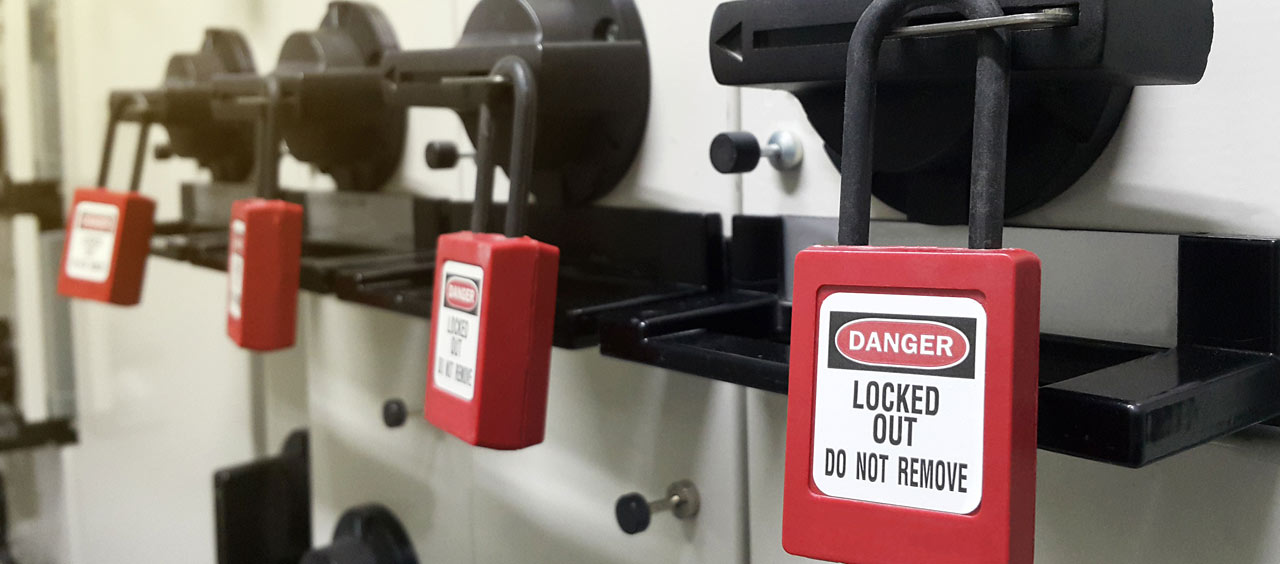


Category
All Industries
Who
Standards
Seat Time
Course Description
The Lockout/Tagout (LOTO) course educates on controlling hazardous energy during maintenance. It covers the roles within the LOTO program, safety devices like locks and tags, and procedures for initiating and releasing from LOTO.
The training emphasizes the significance of hazardous energy control, the use of safety devices, and the importance of following correct LOTO procedures.
An interactive simulation lets learners practice identifying energy sources and using lockout devices.
This course is crucial for ensuring workplace safety during equipment servicing and maintenance.
Course Preview
Lockout/Tagout (LOTO)



Category
All Industries
Who
Standards
Seat Time
Course Description
The Lockout/Tagout (LOTO) course educates on controlling hazardous energy during maintenance. It covers the roles within the LOTO program, safety devices like locks and tags, and procedures for initiating and releasing from LOTO.
The training emphasizes the significance of hazardous energy control, the use of safety devices, and the importance of following correct LOTO procedures.
An interactive simulation lets learners practice identifying energy sources and using lockout devices.
This course is crucial for ensuring workplace safety during equipment servicing and maintenance.
Course Preview
Machine Guarding


Category
All Industries
Who
Standards
Seat Time
Course Description
The Machine Guarding course educates learners about machine hazards in the workplace, emphasizing hand tools, power tools, and machinery components. It covers the significance of machine guarding, how to recognize hazards, safeguarding techniques, and protective measures.
The training highlights the use of machine guards, barriers, personal protective equipment, and safe practices.
An interactive simulation allows participants to inspect machinery in a virtual environment, identifying and addressing safety issues. This course ensures understanding and application of safety measures around machinery to prevent accidents.
Course Preview
Machine Guarding


Category
All Industries
Who
Standards
Seat Time
Course Description
The Machine Guarding course educates learners about machine hazards in the workplace, emphasizing hand tools, power tools, and machinery components. It covers the significance of machine guarding, how to recognize hazards, safeguarding techniques, and protective measures.
The training highlights the use of machine guards, barriers, personal protective equipment, and safe practices.
An interactive simulation allows participants to inspect machinery in a virtual environment, identifying and addressing safety issues. This course ensures understanding and application of safety measures around machinery to prevent accidents.
Course Preview
Occupational Noise: Hearing Conservation


Category
All Industries
Who
Standards
Seat Time
Course Description
The Occupational Noise: Hearing Conservation course educates employees about the importance of hearing protection in noisy environments. It covers the consequences of noise-induced hearing loss, the role of a Hearing Conservation Program, and correct earplug insertion techniques.
The training delves into understanding hearing loss, its implications, and methods for noise exposure assessment.
An interactive simulation lets learners measure workplace noise levels and decide on appropriate hearing protection. On completing the course, participants will be well-versed in hearing conservation practices, ensuring a safer work environment and preventing hearing loss.
Course Preview
Occupational Noise: Hearing Conservation


Category
All Industries
Who
Standards
Seat Time
Course Description
The Occupational Noise: Hearing Conservation course educates employees about the importance of hearing protection in noisy environments. It covers the consequences of noise-induced hearing loss, the role of a Hearing Conservation Program, and correct earplug insertion techniques.
The training delves into understanding hearing loss, its implications, and methods for noise exposure assessment.
An interactive simulation lets learners measure workplace noise levels and decide on appropriate hearing protection. On completing the course, participants will be well-versed in hearing conservation practices, ensuring a safer work environment and preventing hearing loss.
Course Preview
Personal Fall Arrest System: Donning the Harness


Category
All Industries
Who
Standards
Seat Time
Course Description
The Personal Fall Arrest System: Donning the Harness training teaches learners how to properly wear and adjust a PFAS. It emphasizes ensuring the system is securely fastened and covers risks of suspension trauma.
An interactive simulation lets learners assist a virtual coworker in fitting a harness, reinforcing the importance of correct PFAS usage and safety when working at heights.
Course Preview
Personal Fall Arrest System: Inspection


Category
All Industries
Who
Standards
Seat Time
Course Description
The Personal Fall Arrest System: Inspection training is tailored for employees using PFAS in their jobs. It covers the different types of PFAS, their care, maintenance, and damage assessment.
The course emphasizes the importance of proper equipment inspection and not using damaged gear.
An interactive simulation enhances learning by allowing learners to inspect a PFAS harness for defects, ensuring they understand the importance of thorough checks for jobsite safety.
Course Preview
PPE – Awareness



Category
All Industries
Who
Standards
Seat Time
Course Description
The PPE Awareness course educates employees on the vital role of personal protective equipment (PPE) in workplace safety. It covers the Hierarchy of Controls, various PPE types, selecting appropriate PPE, respiratory and hearing protection, and PPE maintenance.
An interactive simulation allows learners to assess and correct PPE usage in a workshop setting. By the end, participants will understand how to effectively select, use, and maintain PPE, ensuring a safer work environment.
This training emphasizes the importance of proactive safety measures and proper PPE usage.
Course Preview
PPE – Body, Hands, Feet
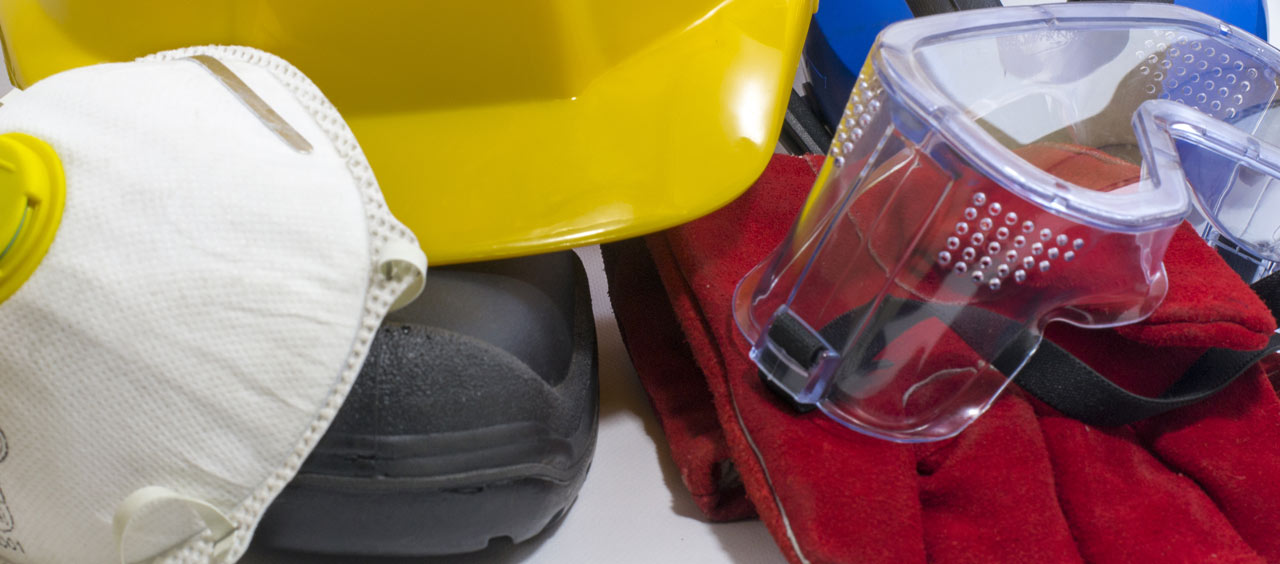


Category
All Industries
Who
Standards
Seat Time
Course Description
The PPE Body, Hands, Feet course educates employees on selecting and using appropriate personal protective equipment (PPE) to prevent workplace injuries. Covering body protection, such as coveralls and vests, hand protection like various gloves, and foot protection including safety shoes, the course emphasizes proper selection based on job-specific hazards. It discusses risks like thermal and chemical burns, vibration hazards, and extreme temperatures.
Participants learn the importance of inspecting PPE for defects or wear before use.
An interactive simulation reinforces inspection skills. On completion, learners can confidently choose, wear, and inspect PPE for maximum safety.
Course Preview
PPE – Eyes, Face, Head



Category
All Industries
Who
Standards
Seat Time
Course Description
The “PPE Eyes, Face, Head” course educates employees about the right personal protective equipment (PPE) for eyes, face, and head protection in the workplace. It covers topics like different types of eye protection, impact ratings, face shield varieties, hard hat classifications, and proper selection based on tasks and environment.
Learners also explore protection control methods and the importance of PPE inspection.
An interactive simulation allows them to understand the significance of PPE during equipment operation. Completing this course empowers participants with the knowledge to select, wear, and inspect PPE effectively, ensuring safety across work scenarios.
Course Preview
PPE Hazardous Environments


Category
All Industries
Who
Standards
Seat Time
Course Description
The PPE Hazardous Environments course prepares employees to protect themselves in hazardous chemical settings. Key topics include conducting a hazard assessment, understanding Protection Levels A-D, recognizing immediately dangerous to life and health (IDLH) environments, and identifying potential exposure routes.
Participants learn to select appropriate PPE based on specific hazards and tasks. The course emphasizes inspecting chemical protective suits, addressing common penetration points, and offers an interactive simulation on environmental hazard evaluation and protective gear selection.
Upon completion, participants will be adept at evaluating and protecting against chemical hazards in the workplace.
Course Preview
PPE Respiratory Protection


Category
All Industries
Who
Standards
Seat Time
Course Description
The PPE Respiratory Protection course educates employees on wearing and maintaining respiratory protective equipment. Key modules delve into identifying airborne hazards, the Respiratory Protection Program, medical fit testing, and understanding various respirator types.
Participants will also learn about inspecting air-purifying respirators, and the importance of selecting the right filter based on specific workplace hazards.
An interactive simulation aids in understanding respirator selection, maintenance, and usage. Upon course completion, participants will be proficient in ensuring their safety against airborne contaminants in their work environment.
Course Preview
PPE Respiratory Protection


Category
All workers, All industries.
Who
Standards
Seat Time
Course Description
The PPE Respiratory Protection course educates employees on wearing and maintaining respiratory protective equipment. Key modules delve into identifying airborne hazards, the Respiratory Protection Program, medical fit testing, and understanding various respirator types.
Participants will also learn about inspecting air-purifying respirators, and the importance of selecting the right filter based on specific workplace hazards.
An interactive simulation aids in understanding respirator selection, maintenance, and usage. Upon course completion, participants will be proficient in ensuring their safety against airborne contaminants in their work environment.
Course Preview
Safety Overview: Construction


Category
Construction
Who
Standards
Seat Time
Course Description
The Safety Overview: Construction course offers an in-depth look into safety principles tailored to the construction sector. It educates on common construction hazards, spanning physical to psychosocial risks, and equips learners to identify them through signs and conditions.
The course underscores workers’ right to a safe workplace and their role in upholding it.
An interactive simulation lets learners navigate a virtual jobsite, spotting and addressing potential hazards, emphasizing proactive safety, and fostering a culture of hazard awareness.
Course Preview
Safety Overview: General Industry


Category
All Industries
Who
Standards
Seat Time
Course Description
The Safety Overview: General Industry course equips learners with crucial knowledge about workplace hazards and safety. Starting with an introduction to workplace dangers, it covers common hazards like physical, chemical, biological, ergonomic, and psychosocial risks. Through the “Visual Literacy for Hazard Recognition” module, learners hone their skills in spotting hazards using an interactive virtual warehouse scenario.
The course emphasizes strategies to maintain a safe workspace and outlines both employer and employee responsibilities.
An interactive simulation where participants identify hazards in a warehouse setting will train participants to be adept at recognizing and mitigating hazards, underscoring the importance of a safe work environment.
Course Preview
Scaffolding Awareness



Category
All Industries
Who
Standards
Seat Time
Course Description
The Scaffolding Awareness course offers insights into scaffolding safety in the workplace. It covers the common causes of falls from scaffolds, the role of the competent person, and how to recognize unsafe scaffold structures.
The course further delves into personal safety risks, control methods for falling objects, electrical system hazards, and risks of scaffold collapse.
An interactive simulation aids in identifying common scaffolding hazards on a construction site. By the end of the course, participants will have a holistic understanding of scaffolding safety, ensuring a safer work environment around scaffolds.
Course Preview
Struck-By Awareness


Category
All Industries
Who
Standards
Seat Time
Course Description
The Struck-By Awareness course educates workers on identifying jobsite hazards from flying objects, falling debris, swinging equipment, and rolling machinery. It emphasizes situational awareness to anticipate and mitigate potential dangers. Trainees learn about the four primary hazard categories and the importance of vigilance.
An interactive simulation immerses participants in a virtual jobsite to identify and categorize hazards, reinforcing their understanding and application. This training aims to foster a safer workplace through enhanced hazard recognition and response skills.
Course Preview
Trenching Awareness


Category
All Industries
Who
Standards
Seat Time
Course Description
The Trenching Awareness course offers participants an understanding of the hazards and safety measures associated with trenching and excavation on jobsites.
The training touches upon potential risks like soil collapse and emphasizes the importance of protective devices. Learners will gain insights into personal safety in trenches, various trenching hazards, and control methods like sloping and shoring.
The course highlights the role of the competent person in ensuring trench safety.
An interactive simulation aids learners in identifying trench hazards. By the end, participants will be equipped to maintain safety around trenches and excavations.
Course Preview
Walking Working Surfaces


Category
General Industry
Who
Standards
Seat Time
Course Description
The Walking Working Surfaces course educates participants on the importance of safe walking and working surfaces in the workplace. The training delves into common hazards, like slippery floors and cluttered areas, and emphasizes timely hazard identification.
Participants will understand preventive measures for slip and fall incidents, including addressing spills and improving lighting. The course also stresses effective hazard signaling to coworkers.
An interactive simulation allows learners to practice hazard recognition in a virtual workplace. By the end, participants will be well-equipped to ensure surface safety, effectively communicate hazards, and minimize injury risks.
Course Preview
Welding and Hot Work Pt 2
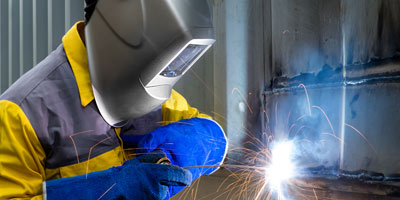

Category
All Industries
Who
Standards
Seat Time
Course Description
The Welding and Hot Work Part 2 course dives deeper into welding safety, emphasizing gas cylinder handling, fire precautions, and permit requirements. Participants learn about safe storage and transportation of gas cylinders, fire prevention techniques, the use of fire suppression equipment, and the crucial role of a fire watch.
The course also covers the importance of hot work permits.
An interactive simulation reinforces practical application, ensuring participants can safely conduct welding and hot work activities on the jobsite.
Course Preview
Welding and Hot Work Pt1

Category
All Industries
Who
Standards
Seat Time
Course Description
The Welding and Hot Work Part 1 course educates participants about safety measures and potential hazards in welding, cutting, and grinding. Covering topics like burns, sparks, gas exposure, and electric shocks, the course emphasizes hazard identification and control methods. It also underlines the importance of using appropriate Personal Protective Equipment.
Participants will finish the course with a robust understanding of safety precautions for welding tasks.
Course Preview
Welding and Hot Work Pt1

Category
All Industries
Who
Standards
Seat Time
Course Description
The Welding and Hot Work Part 1 course educates learners about body hazards in welding tasks. It emphasizes safety measures, like using appropriate Personal Protective Equipment (PPE), and addresses dangers like gas exposure and electric shocks.
By the end, participants will understand hazard mitigation, ensuring a safer working environment during welding activities.
Course Preview
Welding and Hot Work Pt2

Category
All Industries
Who
Standards
Seat Time
Course Description
Welding and Hot Work Part 2 deepens understanding from Part 1, emphasizing additional hazards and protection methods in welding. Topics include gas cylinder safety, fire precautions, fire suppression equipment, fire watch responsibilities, and hot work permits.
Participants will learn about handling gas cylinders, recognizing prohibited areas, using fire equipment, and the importance of permits.
An interactive simulation reinforces practical skills, helping learners identify and mitigate welding hazards. Completing this course ensures participants can maintain a safe welding environment, understanding and addressing potential risks.

